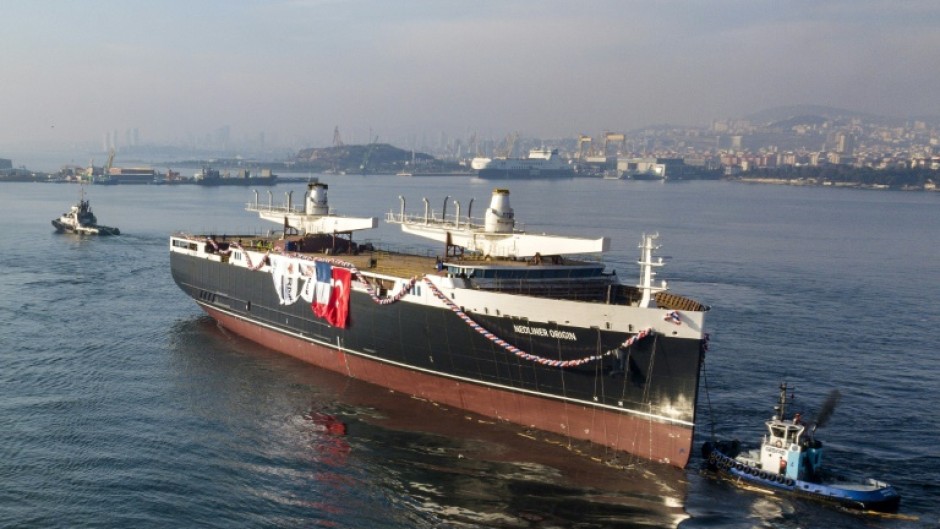
Wednesday, 12 February 2025
World's longest cargo sail ship launched in Turkey

Friday, 10 January 2025
Boeing adds new manufacturing quality control checks

Thursday, 9 January 2025
Air India launches inflight Wi-Fi services on domestic routes

Sunday, 10 November 2024
Dad Who Wanted to be a Pilot Builds Incredible Real-Life Simulator at Home–Now his Daughter’s Obsessed (Watch)

He took his maiden voyage about three months ago, saying, “I always wanted to be a pilot, but at school I was told I wasn’t clever enough.”
“My wife got me a Boeing 737 experience because she knew how much I wanted to do it. It was the best experience of my life—and on my way home, I was searching how to build one.
“I found bits and bobs all over the country and started building it in my spare room after work, in a bid that one day I could get it flying.
 SWNS
SWNSSunday, 13 October 2024
Japan auto show returns, playing catchup on EVs
Tuesday, 24 September 2024
EVs can drive Indian automotive industry reach Rs 134 lakh crore by 2047

Thursday, 19 September 2024
Air India to spend $400 million to revamp interiors of over half its fleet
 FILE PHOTO: Branding for Air India is seen on an Airbus A350-900 at the Farnborough International Airshow, in Farnborough, Britain, July 24, 2024. REUTERS/Toby Melville/File Photo
FILE PHOTO: Branding for Air India is seen on an Airbus A350-900 at the Farnborough International Airshow, in Farnborough, Britain, July 24, 2024. REUTERS/Toby Melville/File PhotoSaturday, 29 June 2024
Formula One is moving towards hybrid engines and renewable fuel. Major environmental progress or just ‘greenwashing’?

For the millions of fans who tune into every race, Formula One (F1) is more than just a sport – it’s the apex of aerodynamics, skill and strategy.
Behind the scenes, a quieter but more crucial race against carbon emissions is unfolding.
Given the sport’s substantial carbon footprint, F1 has faced criticism from society and even from its own drivers.
For example, Sebastian Vettel, a four-time F1 world champion, expressed his concerns by stating:
When I get out of the car, of course I’m thinking as well, ‘is this something that we should do, travel the world, wasting resources?‘
In the pursuit of speed and sustainability, F1 teams committed in 2019 to achieving a net zero emissions goal by 2030.
As part of this goal, every team has expressed their intention to use 100% renewable fuel by 2026. F1 has also just announced it will mandate hybrid engines with a 50-50 split between electric and combustion power.
However, it is crucial to consider whether these promises to go greener are achievable or if this commitment is just an attempt to greenwash the sport.
Just how big is F1’s environmental footprint?
According to a report from F1, the sport releases around 256,000 tons of carbon dioxide into the atmosphere every season.
While cars are often the focus, in reality, the behind-the-scenes activities have a larger environmental impact, as a Grand Prix event involves much more than just the cars on the track.
This includes everything from the transportation of teams and equipment to various international venues, to the energy used in setting up and operating the event and waste management.
A Grand Prix event features ten teams, each operating two cars, which results in a total of 20 cars in each race.
F1 cars actually contribute the least to the sport’s emissions, accounting for only about 0.7%.
In 2013, each car used about 160kg of fuel per Grand Prix race. By 2020, this was reduced to 100kg. F1 is now committed to use as little as 70kg of fuel per car by 2026.
Are hybrid engines a potential solution?
The foremost priorities of hybrid engines in Formula One are efficiency and environmental sustainability.
They integrate an internal combustion engine, batteries and an energy recovery system.
Compared to conventional internal combustion engines, the inclusion of batteries allows F1 cars to deliver rapid power more efficiently. The instantaneous torque provided by electric power significantly enhances acceleration out of corners, contributing to overall performance improvements.
Hybrid engines also reduce fuel consumption compared to traditional engines.
The hybrid system includes the Motor Generator Unit-Kinetic (MGU-K) and the Motor Generator Unit-Heat (MGU-H). The MGU-K converts kinetic energy from braking into electrical energy and stored in the battery, which boosts acceleration and speed. The MGU-H uses heat energy from exhaust gases to increase engine power.
This configuration not only conserves fuel but also maximises energy use, thereby reducing carbon emissions and enhancing environmental sustainability.
Will these changes reduce the sport’s environmental impact?
To reduce the environmental impact of F1 cars, fuel plays a major role. F1 started with 10% sustainable fuel (“E10”) – a blend of 10% renewable ethanol and 90% fossil fuel.
From 2026, they are determined to shift from 10% to 100% renewable fuel, which is synthesised by municipal waste or non-food biomass.
However, renewable fuels still produce carbon emissions – burning renewable fuel does release carbon dioxide but the emissions are offset by the carbon dioxide absorbed from the atmosphere during the fuel’s production, rendering it carbon neutral overall.
While the hybrid system will remain in place in 2026, given the complexities and cap on engine-specific costs, modern F1 cars will scrap the MGU-H and solely rely on the MGU-K.
Moreover, F1 is committed to increasing the energy efficiency of MGU-K to harvest more braking energy. Consequently, it aims to increase power output of MGU-K from 120kW to 350kW by 2026, nearly tripling it.
As for its broader carbon footprint, F1 has also pledged to incorporate re-purposing and recycling options for race weekend materials, batteries, and MGU-K. This will help minimise waste and the sport’s carbon footprint.
Because the carbon footprint of F1 cars is relatively small, the sport should focus its efforts on reducing emissions in transportation, logistics and fan activities.
Likewise, hosting Grand Prix races in various countries across different continents requires extensive logistical arrangements and travel. For instance, the F1 racing series in 2023 visited 20 countries across five continents, resulting in significant carbon emissions.
Consequently, F1 should consider hosting races within a single country or at least within a single continent.
Can F1 cars go fully electric?
For the sustainability of the sport, a transition to 100% electric cars is likely in the future. This transition can benefit from the experiences gained with Formula E, which employs fully electric vehicles.
However, several factors must be considered before fully electrifying F1 cars, including regulation changes, battery weight, battery safety and charging infrastructure.![]()
Yasir Arafat, Senior Research Associate (Batteries for EVs and Batteries Recycling), Edith Cowan University; Muhammad Rizwan Azhar, Lecturer of Chemical Engineering, Sustainable Energy and Resources, Edith Cowan University, and Waqas Uzair, Research associate, Edith Cowan University
This article is republished from The Conversation under a Creative Commons license. Read the original article.
Thursday, 6 June 2024
Chongqing Airlines to resume services to Colombo from 24 June

- Returns after four year hiatus with three weekly flights
Thursday, 30 May 2024
Mahindra launches new variant for 'XUV700' starting at Rs 16.89 lakh

Thursday, 23 May 2024
Snowstorm hits US: 2,000 flights canceled, more than 2,400 delayed
What is air turbulence?

You probably know the feeling: you’re sitting on a plane, happily cruising through the sky, when suddenly the seat-belt light comes on and things get a little bumpy.
Most of the time, turbulence leads to nothing worse than momentary jitters or perhaps a spilled cup of coffee. In rare cases, passengers or flight attendants might end up with some injuries.
What’s going on here? Why are flights usually so stable, but sometimes get so unsteady?
As a meteorologist and atmospheric scientist who studies air turbulence, let me explain.
What is air turbulence?
Air turbulence is when the air starts to flow in a chaotic or random way.
At high altitudes the wind usually moves in a smooth, horizontal current called “laminar flow”. This provides ideal conditions for steady flight.
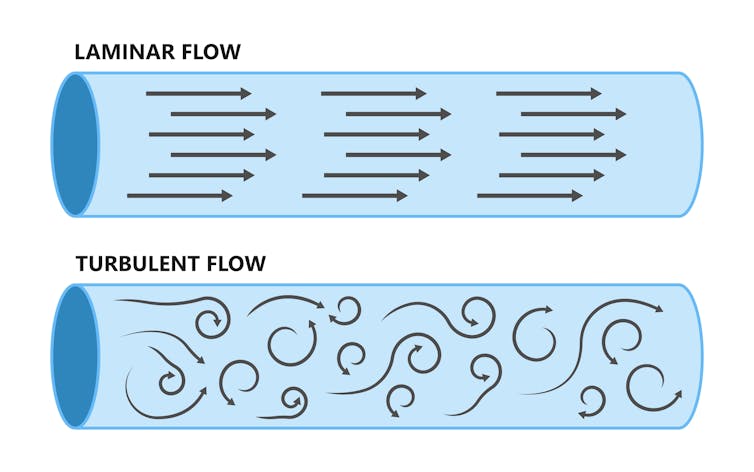 In ‘laminar flow’, air moves smoothly in one direction. When turbulence begins, it goes every which way. Shutterstock
In ‘laminar flow’, air moves smoothly in one direction. When turbulence begins, it goes every which way. ShutterstockTurbulence occurs when something disrupts this smooth flow, and the air starts to move up and down as well as horizontally. When this happens, conditions can change from moment to moment and place to place.
You can think of normal flying conditions as the glassy surface of the ocean on a still day. But when a wind comes up, things get choppy, or waves form and break – that’s turbulence.
What causes air turbulence?
The kind of turbulence that affects commercial passenger flights has three main causes.
The first is thunderstorms. Inside a thunderstorm, there is strong up-and-down air movement, which makes a lot of turbulence that can spread out to the surrounding region. Thunderstorms can also create “atmospheric waves”, which travel through the surrounding air and eventually break, causing turbulence.
Fortunately, pilots can usually see thunderstorms ahead (either with the naked eye or on radar) and will make efforts to go around them.
The other common causes of turbulence create what’s typically called “clear-air turbulence”. It comes out of air that looks perfectly clear, with no clouds, so it’s harder to dodge.
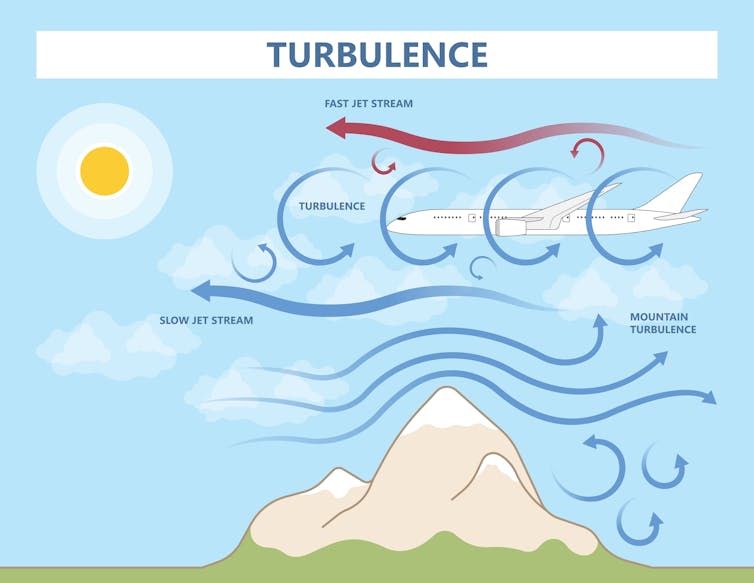 Jet streams and mountains are common causes of clear-air turbulence. Shutterstock
Jet streams and mountains are common causes of clear-air turbulence. ShutterstockThe second cause of turbulence is jet streams. These are high-speed winds in the upper atmosphere, at the kind of altitudes where passenger jets fly.
While air inside the jet stream moves quite smoothly, there is often turbulence near the top and bottom of the stream. That’s because there is a big difference in air speed (called “wind shear”) between the jet stream and the air outside it. High levels of wind shear create turbulence.
The third thing that makes turbulence is mountains. As air flows over a mountain range, it creates another kind of wave – called, of course, a “mountain wave” – that disrupts air flow and can create turbulence.
Can air turbulence be avoided?
Pilots do their best to avoid air turbulence – and they’re pretty good at it!
As mentioned, thunderstorms are the easiest to fly around. For clear-air turbulence, things are a little trickier.
When pilots encounter turbulence, they will change altitude to try to avoid it. They also report the turbulence to air traffic controllers, who pass the information on to other flights in the area so they can try to avoid it.
Weather forecasting centres also provide turbulence forecasts. Based on their models of what’s happening in the atmosphere, they can predict where and when clear-air turbulence is likely to occur.
Will climate change make turbulence worse?
As the globe warms and the climate changes in coming decades, we think air turbulence will also be affected.
One reason is that the jet streams which can cause turbulence are shifting and may become more intense. As Earth’s tropical climate zones spread away from the equator, the jet streams are moving with them.
This is likely to increase turbulence on at least some flight routes. Some studies also suggest the wind shear around jet streams has become more intense.
Another reason is that the most severe thunderstorms are also likely to become more intense, partly because a warmer atmosphere can hold more water vapour. This too is likely to generate more intense turbulence.
These predictions are largely based on climate models, because it is difficult to collect the data needed to identify trends in air turbulence. These data largely come from reports by aircraft, the quality and extent of which are changing over time. These measurements are quite different from the long-term, methodically gathered data usually used to detect trends in the weather and climate.
How dangerous is air turbulence?
Around the globe, air turbulence causes hundreds of injuries each year among passengers and flight attendants on commercial aircraft. But, given the hundreds of millions of people who fly each year, those are pretty good odds.
Turbulence is usually short-lived. What’s more, modern aircraft are engineered to comfortably withstand all but the most extreme air turbulence.
And among people who are injured, the great majority are those who aren’t strapped in. So if you’re concerned, the easiest way to protect yourself is to wear your seat belt. ![]()
Todd Lane, Professor, School of Geography, Earth and Atmospheric Sciences, The University of Melbourne, The University of Melbourne
This article is republished from The Conversation under a Creative Commons license. Read the original article.
Tuesday, 14 May 2024
New Rule Requires US Airlines to Give Automatic Refunds for Canceled or Delayed Flights and Late Baggage

- Canceled or significantly changed flights:
- Passengers will be entitled to a refund if their flight is canceled or significantly changed, and they do not accept alternative transportation or travel credits offered. For the first time, the rule defines “significant change.” Significant changes to a flight include departure or arrival times that are more than 3 hours domestically and 6 hours internationally; departures or arrivals from a different airport; increases in the number of connections; instances where passengers are downgraded to a lower class of service; or changes that result in less accessible or accommodating situations to a person with a disability.
- Significantly delayed baggage return:
- Passengers who file a mishandled baggage report will be entitled to a refund of their checked bag fee if it is not delivered within 12 hours of their domestic flight arriving at the gate, or 15-30 hours of their international flight arriving at the gate, depending on the length of the flight.
- Extra services not provided:
- Passengers will be entitled to a refund for the fee they paid for an extra service — such as Wi-Fi, seat selection, or inflight entertainment — if an airline fails to provide this service.
- The DOT’s (U.S. Department of Transportation) final rule also makes it simple and straightforward for passengers to receive the money they are owed. Without this rule, consumers have to navigate a patchwork of cumbersome processes to request and receive a refund — searching through airline websites to figure out how make the request, filling out extra “digital paperwork,” or at times waiting for hours on the phone. In addition, passengers would receive a travel credit or voucher by default from some airlines instead of getting their money back, so they could not use their refund to rebook on another airline when their flight was changed or cancelled without navigating a cumbersome request process.
- Automatic: Airlines must automatically issue refunds without passengers having to explicitly request them or jump through hoops.
- Prompt: Airlines and ticket agents must issue refunds within seven business days of refunds becoming due for credit card purchases and 20 calendar days for other payment methods.
- In Cash or original form of payment: Airlines and ticket agents must provide refunds in cash or whatever original payment method the individual used to make the purchase, such as credit card or airline miles. Airlines may not substitute vouchers, travel credits, or other forms of compensation unless the passenger affirmatively chooses to accept alternative compensation.
- In the full amount: Airlines and ticket agents must provide full refunds of the ticket purchase price, minus the value of any portion of transportation already used. The refunds must include all government-imposed taxes and fees and airline-imposed fees, regardless of whether the taxes or fees are refundable to airlines.
Friday, 10 May 2024
Electric cars pile up at European ports as Chinese firms struggle to find buyers

China’s automotive industry has revolutionised over the past decade, from producing basic western clones to making cars that equal the world’s best. As the manufacturing powerhouse of the world, China is also producing them in huge volumes.
However, Chinese cars are facing difficulties in finding buyers in Europe. Imported cars, many of which are Chinese electric vehicles, are piling up at European ports, with some spending up to 18 months in port car parks as manufacturers struggle to get them onto people’s driveways.
Why is this, though? Chinese electric vehicles in particular are getting positive reviews. Having driven them myself, I can attest to them matching, or even exceeding, the well-known European brands in range, quality and technology.
But entering an established market as a challenger is a complex operation. Chinese makers will have to contend with buyer wariness, a lack of brand image, trade protectionism and rapid outdatedness.
Lack of buyer faith
China’s automotive expansion programme draws parallels with the moves made by Japan in the 1960s and 70s. At that time, the product coming from Japan was commendable but lacked the finesse, design and longevity of their western counterparts. Japanese cars were thought of as tinny, underpowered and susceptible to rusting, as well as looking very generic compared to stylish European designs.
Memories of Japan’s involvement in the second world war were also fresh in (particularly American) buyer’s minds, who were slow to forgive a nation that launched the Pearl Harbour attacks. However, by constantly focusing on a reliable, relatively cheap and increasingly stylish product, Japan slowly turned this around to become the automotive powerhouse of the 1990s and 2000s.
China is viewed with suspicion by many westerners, and its carmakers are similarly hampered by their recent legacy of producing both endorsed and illegal clones of European cars. But with the lessons of the Japanese to learn from, Chinese cars are rapidly advancing to match and exceed existing alternatives.
Strategic purchases of brands like Volvo, Lotus and MG have also given China existing brands that are respected and, more importantly, have some of the best engineering knowledge in the world.
Yet, even after buying up western brands, Chinese automakers have proven unable to buy loyalty from existing customers of brands like BMW, Porsche, Ferrari and Ford. For these buyers, the history of the brand in terms of known reliability and even things like motor sport success is something that Chinese makers, like the Japanese, will have to build up over time.
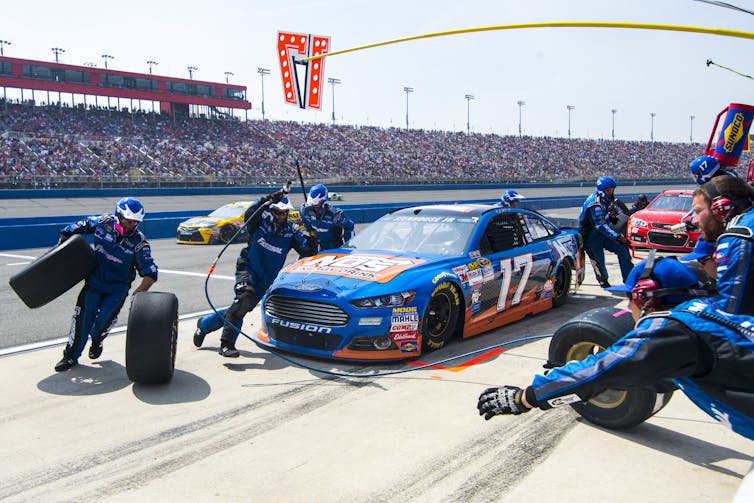
It was Ford dealers who, in the 1960s, coined the phrase: “Win on Sunday, Sell on Monday”. The phrase is as an adage to attest the fact that if buyers see a car winning a race, they’ll be motivated to go out and buy one.
Existing manufacturers also have a legacy of reliability that buyers have experienced for themselves, giving a huge brand loyalty benefit. Add to this a lack of an established dealer network outside of China and you see how Chinese makers struggle against the established competition.
A challenging trade environment
China has a price advantage compared to Europe or the US. Economies of scale, excellent shipping links and cheap labour mean that Chinese cars are cheaper both to make and buy.
However, in many countries they are subject to high import tariffs. The EU currently imposes a 10% import tariff on each car brought in. And in the US, car imports from China are subject to a 27.5% tariff.
These tariffs may well rise further. The EU is conducting an investigation into whether its tariff is too low. If it concludes this later this year, higher duties will be applied retrospectively to imported cars.
Cars, and specifically electric vehicles, are also in a phase of their development where they see rapid changes and updates. Traditionally, vehicle models would see a market life of between four and seven years, perhaps with small updates in trim, colour palette or feature availability.
But Tesla has turned this on its head. The Tesla Model S, for example, has seen almost continuous product updates that make it barely recognisable in terms of hardware from a car released in 2012. Chinese automakers have taken note. They are bringing out new models around 30% faster than in most other nations.
Tesla is supporting owners of older cars with upgrades, at extra expense, to bring them in line with the latest hardware. Without guaranteed software support like this, the rate at which Chinese automakers are bringing out new models could make buyers wary that the product they have bought will soon become outdated compared to buying a car on a more traditional update cycle.
How to succeed
Many of these factors can be fixed. They also chime more with private buyers than business buyers, who are more concerned with cost. Chinese makers would be well-advised to push harder into this market.
In the UK, the fleet market dwarfs the private market, and the situation is similar in Europe. Selling en masse to fleets and rental companies gets more cars on the road and allows more data about reliability to feed into the market.
The road to succeeding in a new market such as the EU will be slow and bumpy. But it’s clear that China is laser focused on its global push. It remains to be seen whether this lack of buyers can be turned around.
This article is republished from The Conversation under a Creative Commons license. Read the original article.
Thursday, 7 December 2023
Volkswagen to reduce workforce as it chases profits
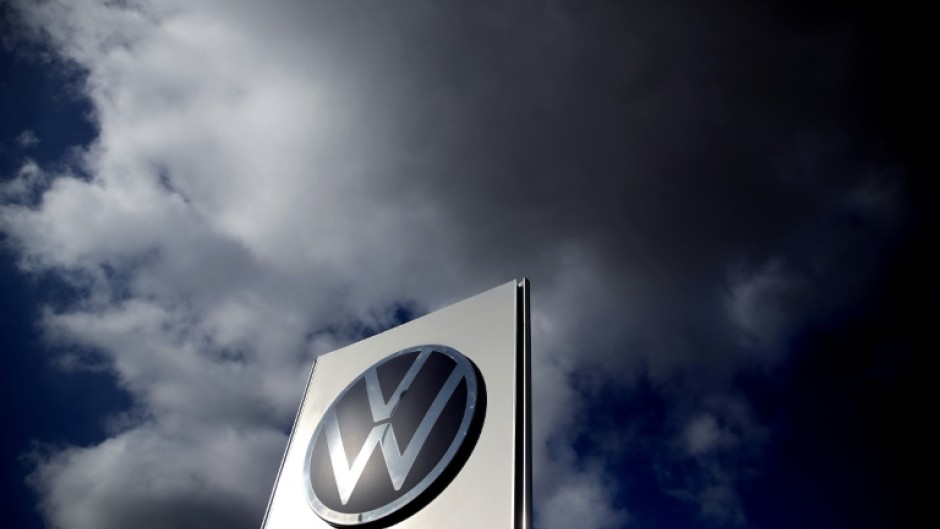
Saturday, 18 November 2023
The world’s 280 million electric bikes and mopeds are cutting demand for oil far more than electric cars

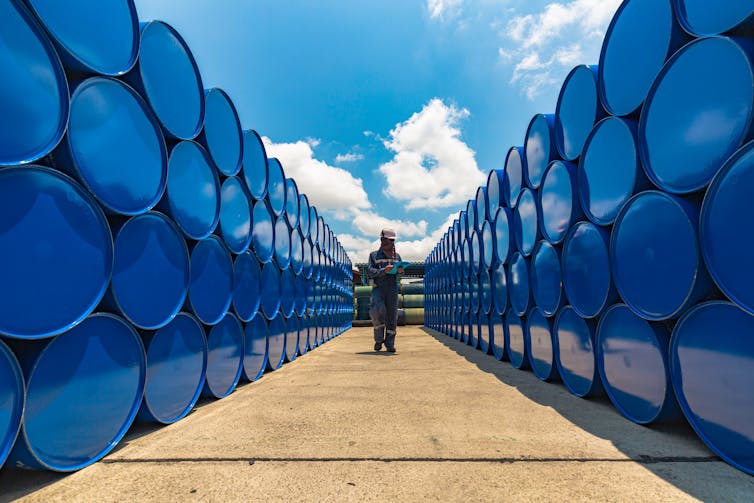 E-bikes and electric mopeds are cutting oil demand more than electric vehicles. Shutterstock
E-bikes and electric mopeds are cutting oil demand more than electric vehicles. Shutterstock
Friday, 6 October 2023
Tata Motors showcases new electric SUV concept Curvv
- Tata Motors on Wednesday (6 April) showcased its electric SUV concept – Curvv that will feature a more dynamic design and offer an extended range. The electric motor propelling Tata Curvv will have a higher power rating as well, in comparison to Nexon EV.
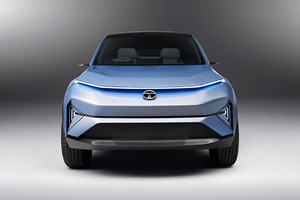
- As per speculations, Curvv will have a larger 40 kWh battery option (long-range version), along with a few additional features, while the existing 30.2 kWh battery option will remain on sale.
- Tata Curvv will get two IC engine options as well, expected to be a 1.5-litre diesel engine and a 1.5-litre petrol engine. The petrol mill will be a four-cylinder version of the brand’s three-cylinder turbo-petrol engine, which is available on Nexon and Altroz. This new powerplant is expected to generate around 160 PS of peak power. The diesel engine of Curvv will likely be an updated version of the carmaker’s existing 1.5L oil-burner, which also does duty on Altroz and Nexon. Tata Motors will offer both manual and automatic gearbox options here. However, it should be noted that the EV version will go on sale first, and the IC engine version will launch later.
- Conceptualised to offer practicality and elegance, all whilst exuding dynamism and unmatched road presence, the Curvv is expected to storm the market within the next two years. This concept will introduce India to a unique, edgy and sporty coupe body style, which in the past has only been prevalent in the high end luxury segment.
- The concept Curvv in its production ready avatar will first enter the market as an extension of the company’s ever evolving electric vehicle (EV) portfolio, which will subsequently be followed by its Internal Combustion Engine (ICE) counterpart.
- “Our ongoing business turnaround is history in the making. From record sales to upping our market share game, the last fiscal has been nothing but magical for us. We not only emerged as the No 1 SUV player with an array of products in our portfolio, we also continued to supercharge our growth in the EV space with our highest ever annual EV sales - going up by 353 per cent vs FY21,” Shailesh Chandra, managing director, Tata Motors Passenger Vehicles Ltd and Tata Passenger Electric Mobility Ltd, said while speaking at the event.
- “With a robust SUV DNA at its core, and a plethora of new age materials, features and interfaces, we are confident that this coupe concept will redefine mainstream SUV design. Furthermore, with the concept Curvv, we now enter the Generation 2 EV architecture, which will further enhance the adoption of EVs in India by overcoming the current barriers. With this new architecture, we will strengthen the key pillars of Range, Performance and Technology, while retaining Safety and Reliability as hygiene offerings,” he added.
- Tata Motors claims that the Generation 2 EV architecture will be advanced, flexible and capable of offering multi-powertrain options. Products on this architecture will be crafted to deliver a higher range while retaining the credibility and reliability standards set by the Generation 1 products powered by Ziptron.“The concept Curvv in its production version will provide customers with unprecedented versatility of use while giving rise to a new breed of vehicles in India that provides its users with a true lifestyle mobility solution to enjoy – a vehicle that combines functional attributes without compromising its premium aesthetic,” says the company.Tata Motors showcases new electric SUV concept Curvv
Sunday, 20 August 2023
M&M aims to double exports in 3 years with new OJA platform
.jpg)
- By Aniket Gupta: Mahindra & Mahindra (M&M), the leader among India’s tractor industry companies, has set its sights on a remarkable goal. It aims to double its exports from India within the next three years.
- This ambitious plan will gain momentum from the introduction of its innovative platform, OJA, which was recently unveiled in Cape Town, South Africa.
- Mahindra Tractors is a part of the group’s farm equipment division of the $19.4-billion Mahindra Group, and the flagship unit of the division.
- During the year ended 31 March 2023, the Mahindra Group exported 18,104 tractors. Hemant Sikka, president of the farm equipment segment, aims for a substantial leap, aspiring to raise this figure to 36,000 tractors by fiscal 2025-26.
- With the introduction of the OJA lineup, M&M is embarking on an expansion into a dozen new markets. This initiative includes the establishment of a new office in Thailand, which will serve as a strategic base for accessing the ASEAN markets.
- The company's sights are set on European markets as well, with special focus on countries renowned for vine cultivation, such as Germany, Italy, and Spain. Sikka emphasized that M&M currently lacks a footprint in both regions, ASEAN and Europe.
- What about the American market? Growth there has been slow, but Sikka anticipates this is a temporary situation.
- In Brazil, M&M has already achieved a remarkable feat by increasing its market share from 3.5 per cent to an impressive 7.2 per cent in the past two years.
- Distinct sub-platforms
- Comprising four distinct sub-platforms — sub-compact, compact, small utility, and large utility — the OJA platform is a comprehensive family. At present, the sub-compact tractor range is earmarked exclusively for international markets and will not be offered in India. Special attention will be paid to the American market, according to Sikka.
- However, Sikka has noted that if there is a demand for the sub-compact category within India, its introduction in India too would be considered.
- Beginning in January 2024, M&M is set to initiate the export of the sub-compact series within the OJA tractor range. On the other hand, the introduction of the expansive utility platform is reserved for a later timeframe, anticipated around the fiscal year 2025-26. This forthcoming platform is created to serve both the domestic Indian market and international export markets.
- What about pricing? The Mahindra OJA 27 HP tractor will be priced at Rs 5.64 lakh, and the OJA 40 HP tractor at Rs 7.35 lakh.
- Production of the OJA range will happen at M&M's Zaheerabad facility in Telangana, which has a total annual manufacturing capacity of 100,000 tractors.
- Sikka notes that the tractor industry has maintained a consistent compound annual growth rate (CAGR) of approximately 7 percent over several years. In contrast, in the horticulture segment, tractors are experiencing a faster, double-digit growth rate.
- The OJA series is a dedicated range of tractors tailored for specific uses, finding utility in both horticulture and paddy cultivation. Sikka explains that paddy farming need to be lighter as the presence of water makes heavier tractors vulnerable to sinking in the fields.In an unveiling event on Tuesday, 15 August 2023, M&M introduced three distinct OJA offerings spanning a weight range of 700 kg to 2000 kg and containing power capacities ranging from 20 horsepower to 40 horsepower. Source: https://www.domain-b.com/
Wednesday, 9 August 2023
Stellantis may reintroduce Fiat, and launch Citroen models in India
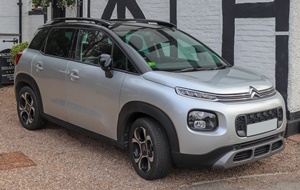
Tuesday, 30 August 2022
Collaboration for Rolls-Royce SMR deployment in the Netherlands
.jpg?ext=.jpg)



